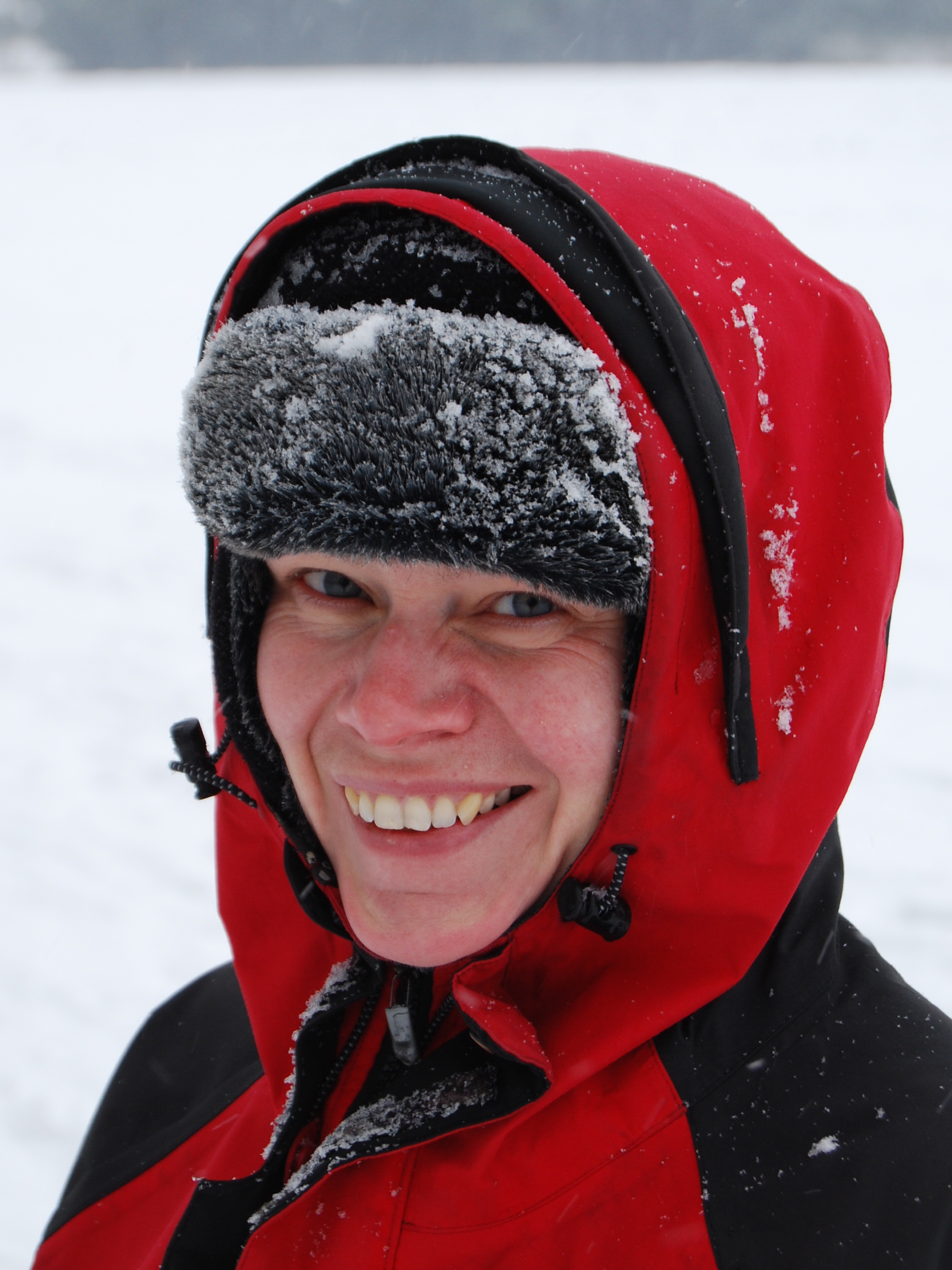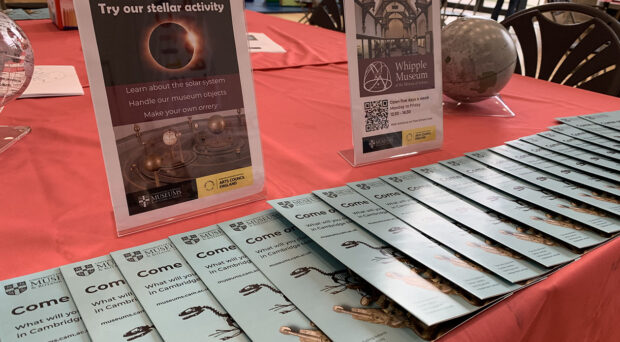This is the scene of a disaster in the Fitzwilliam Museum lunchroom. A team of conservators are carefully salvaging items from the wet and filthy wreckage of artefacts all over the floor, with only head torches to see by:
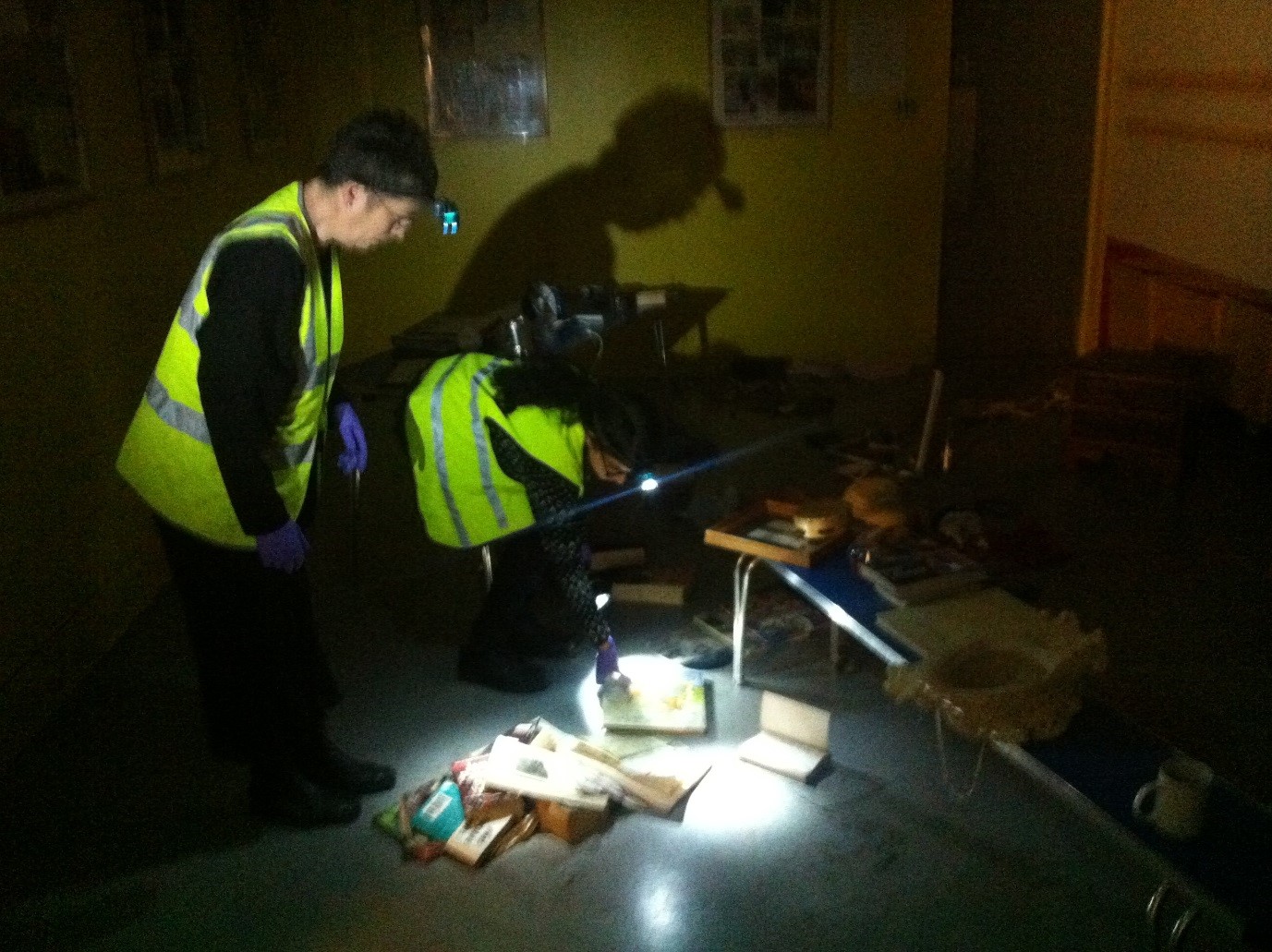
Only a few hours earlier, conservators Helena Rodwell, Samantha Archetti and Sophie Rowe had gleefully made a horrible mess in the room so we could train our colleagues in how to rescue museum collections if disaster strikes. We threw lots of charity shop items all over the floor and chucked cups of water and coffee grounds over them to simulate conditions after a fire or flood. We overturned tables, broke paintings and smashed crockery:
It is admittedly great fun to be allowed to make such a mess in the museum, but it has a serious purpose. Disasters do strike museums, libraries and historic houses and many people know of cases like the Glasgow School of Art, Clandon Park and Windsor Castle. But with recent extreme weather patterns, more and more places also experience floods and storm damage which might not make the news but can be just as disastrous for collections. Knowing how to act in such a situation can minimise the damage, which is why all museums have an emergency plan. But it can be very intimidating to face this kind of chaos, so salvage training is really important to give people the knowledge and confidence to do the right thing in an emergency.
The “disaster scenario” was the final part of a day-long workshop. First we showed the participants how to organise your helpers and spaces in an emergency. Then we practised salvage and first aid techniques on specific materials in a calm and controlled fashion. Finally we introduced the scenario and the teams got underway with rescuing the artefacts from the disaster area and packing them or giving first aid, according to their needs.
Artefacts were brought out of the disaster area to a “triage point” where the teams decided what to do with them – and some were pretty far gone:
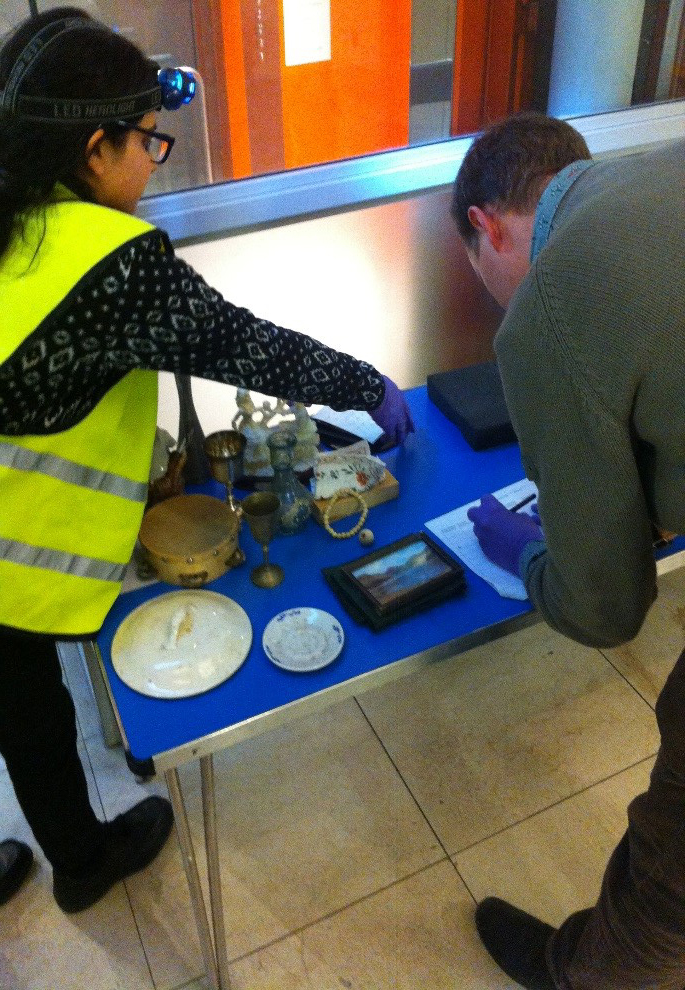
Documenting which objects had been rescued and where they went was a vital job but it was difficult to keep up with the large number of things moving around quickly:
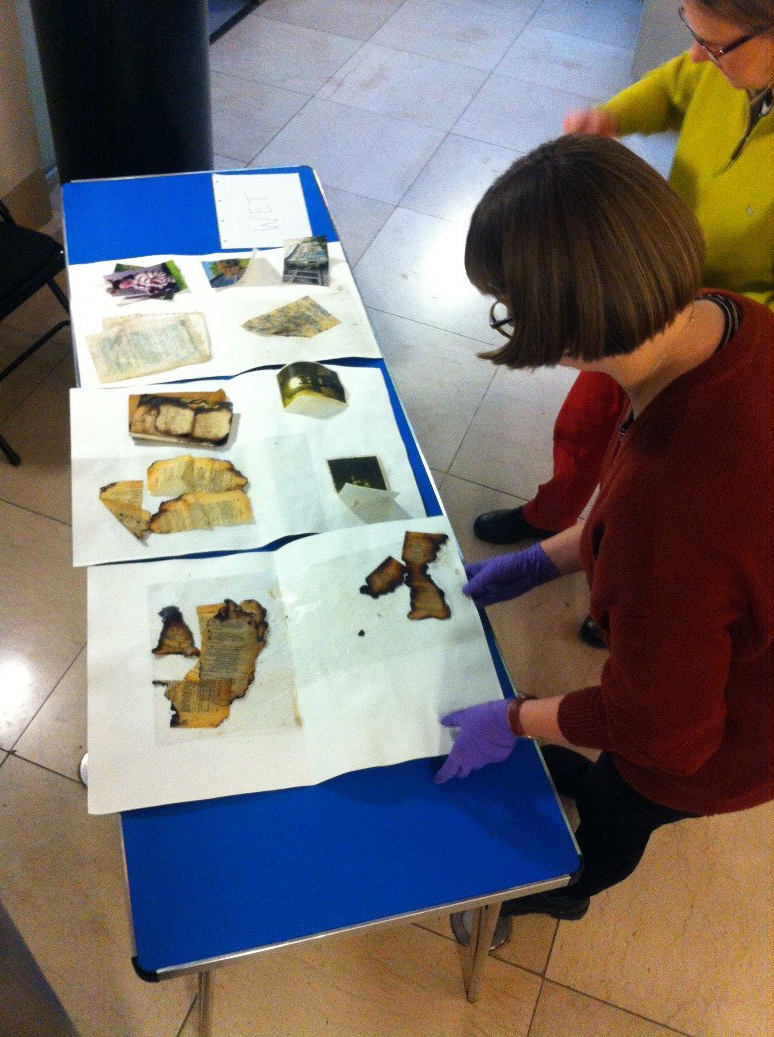
Documenting which objects had been rescued and where they went was a vital job but it was difficult to keep up with the large number of things moving around quickly:
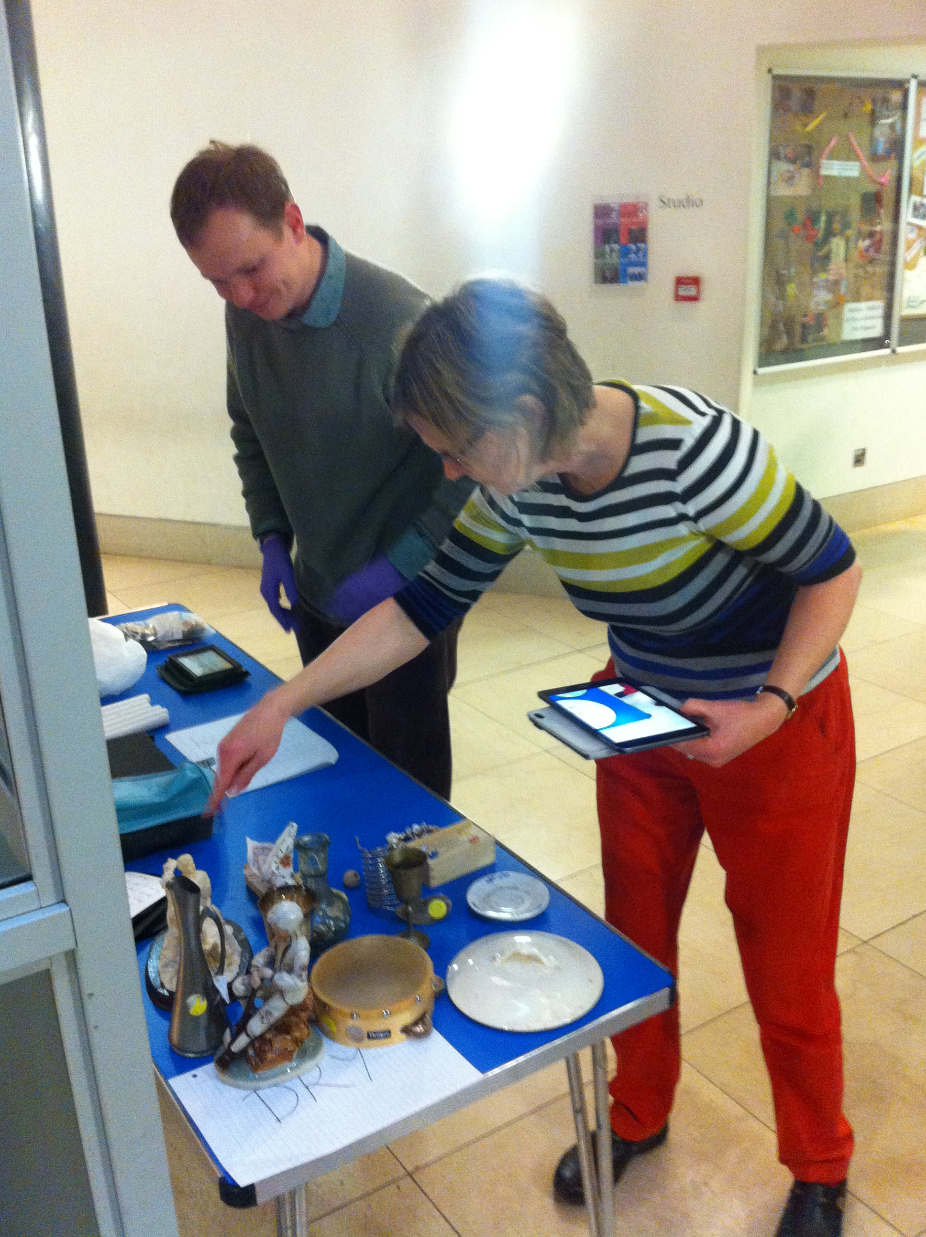
In the recovery area the recovery team converted a table into a wind tunnel to dry the soggy books:
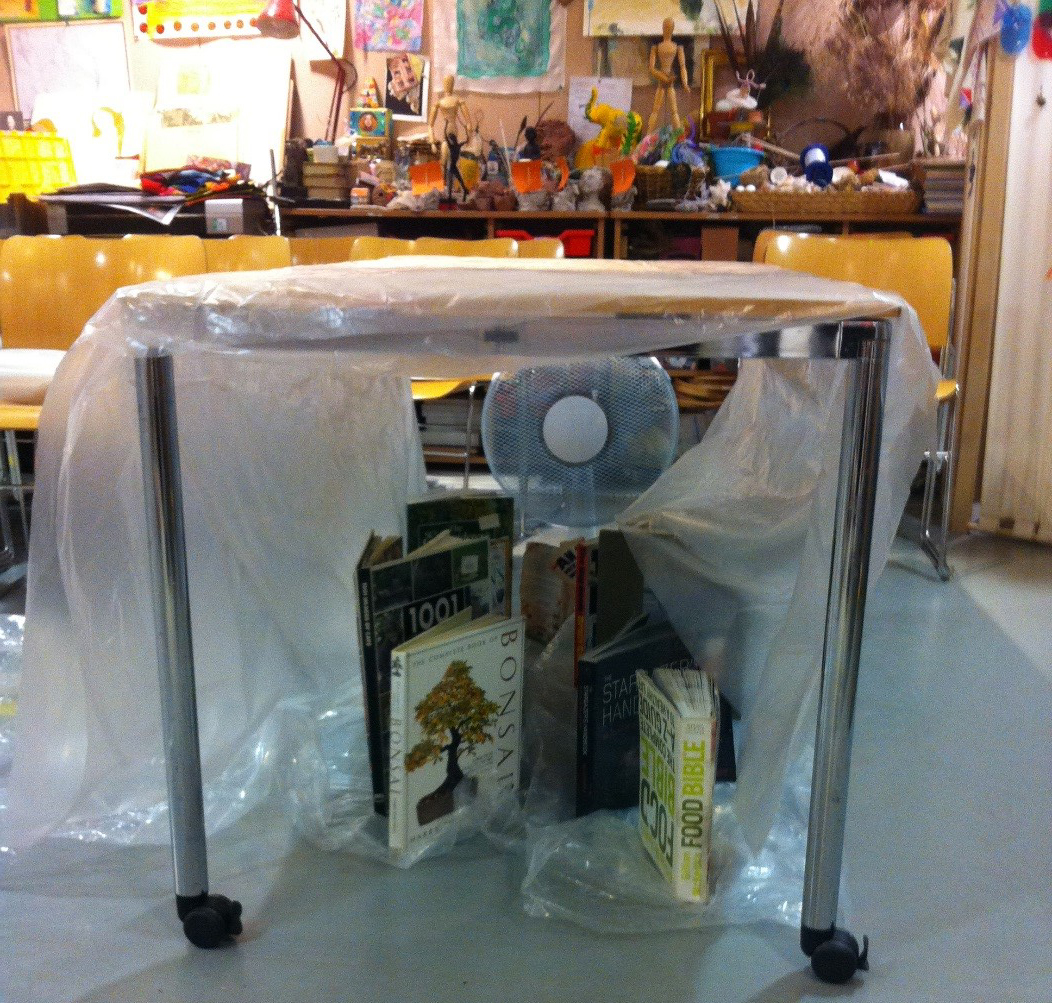
And more books were spread out on tables, taking up masses of space:
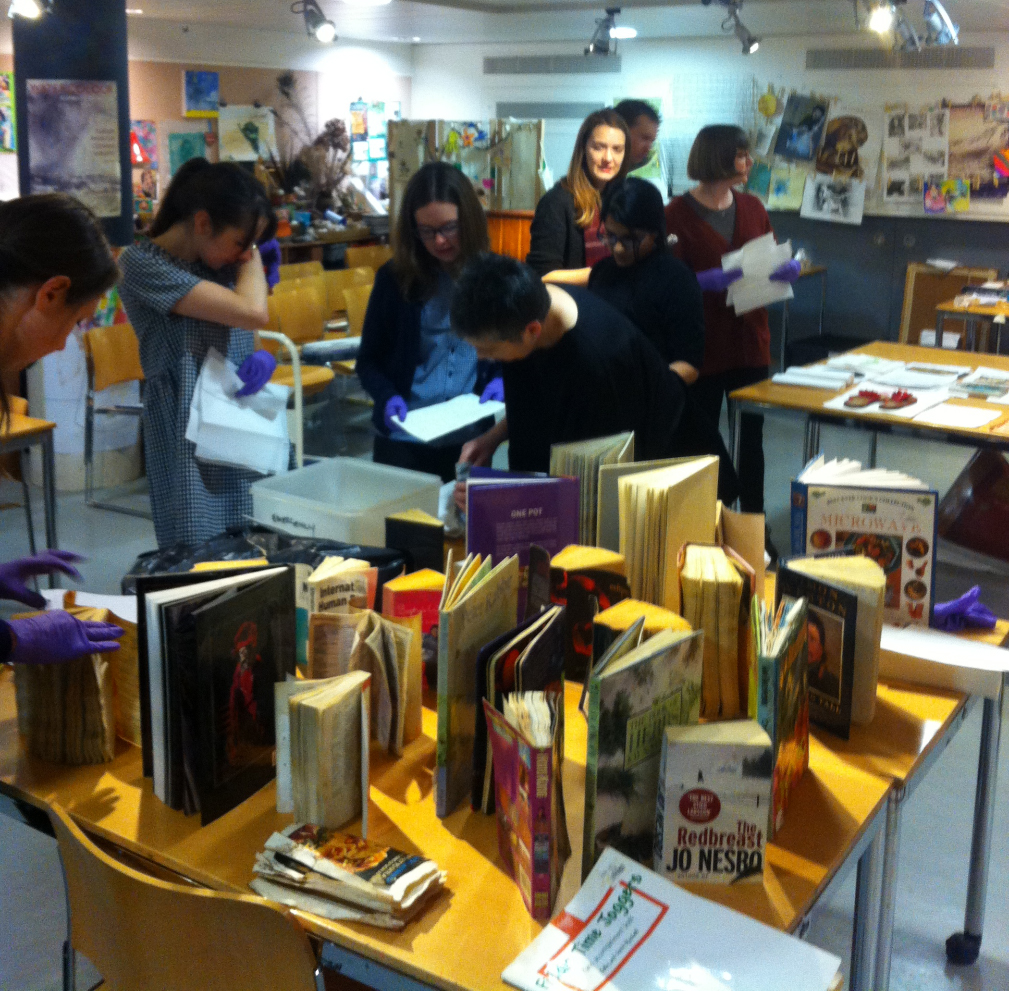
Practising salvage in a mock situation is very useful for testing first aid techniques and also for spotting ways to improve how teams respond to an emergency. Although we all hope this will never happen to us, training can give us valuable confidence to tackle a real disaster safely and well.
We will be running more courses like this in the future, so check the courses page on our website.

